Courtly Love
Siân Echard, University of British Columbia
Geoffrey of Monmouth’s twelfth-century account of Arthur's plenary court includes this paragraph which associates a desire to please women with chivalric behaviour. By Malory’s day, love and knighthood are in some ways apparently synonymous, but Malory seems at times uncomfortable with the adulterous relationships which have been seen as central to “courtly love.” Certainly it seems unlikely he would have approved of these Rules of Love from Andreas Capellanus’s twelfth-century De amore :
Marriage is no real excuse for not loving.
He who is not jealous cannot love.
Love is always a stranger in the home of avarice.
When made public love rarely endures.
The easy attainment of love makes it of little value; difficulty of attainment makes it prized.
Every lover regularly turns pale in the presence of his beloved.
When a lover suddenly catches sight of his beloved his heart palpitates.
A new love puts to flight an old one.
A man in love is always apprehensive.
Real jealousy always increases the feeling of love.
Jealousy, and therefore love, are increased when one suspects his beloved.
He whom the thought of love vexes eats and sleeps very little.
A slight presumption causes a lover to suspect his beloved.
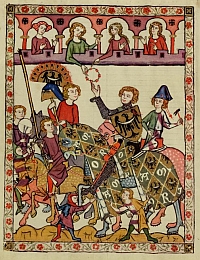
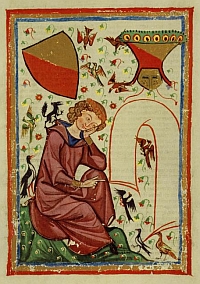
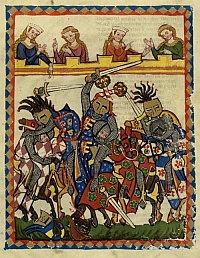
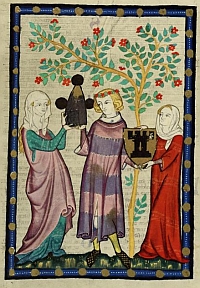
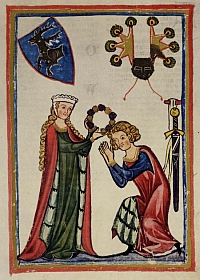
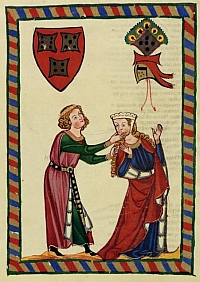
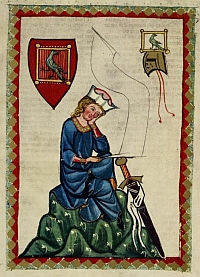
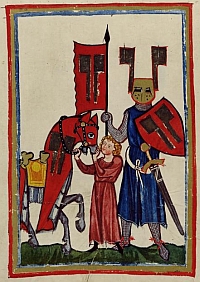
Compare what is implied by Edmund Blair Leighton’s painting, with what Lancelot says below:
“Alas,” quod Lancelot, “Wo is me,
That ever sholde I see with sight
Again my lord for to be,
The noble king that made me knight!”
(Stanzaic Morte Arthur, 2142-2145)
The paintings by Edmund Blair Leighton and Herbert James Draper used to illustrate this page are in the public domain according to Wikimedia Commons.